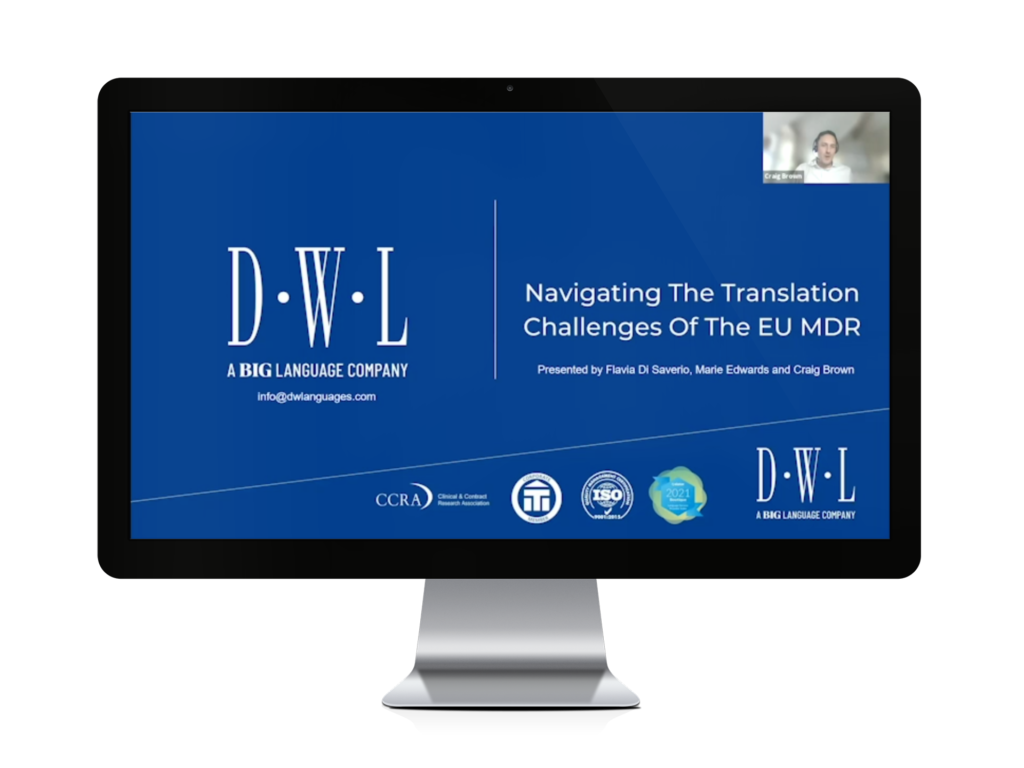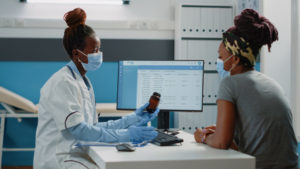The COVID-19 pandemic heralded a new era of digitalization in the pharmaceutical sector as organizations switched to digital monitoring for clinical trials and turned to a range of multimedia to provide patients with online information and support. This blog will explain what these innovations mean for the industry’s future.
From remote training for healthcare providers to the use of videos and apps for patient information, the pandemic has revolutionized how pharmaceutical data is shared, tracked, and deployed. The expectation for face-to-face management of patient consultations, prescriptions, and clinical trials has irrevocably shifted. Not only are patients and providers more used to conducting these types of interactions remotely, but in many instances, they now prefer it, thanks to the benefits it brings of increased convenience and improved access to product information, test results, and more.

Digitalization and Language Access
The increased investment in do-it-yourself and remote access tools can be especially beneficial to patients with limited-English proficiency (LEP), as it provides them with the time and opportunity to digest complex information on drug products, dosages, and side effects. The same is true for those LEP patients who participate in clinical trials.
In turn, the switch to digital patient monitoring and information sharing has enabled pharmaceutical companies and clinical trial organizers to streamline how they organize, track, and share information and data with the sizable LEP group of patients. Of course, it has also required them to invest considerable time and effort into the provision of new multilingual media and online tools.
This industry’s move towards digitalization was already underway before COVID-19, but the pandemic hastened the trend. Examples include the development of a range of new media, such as videos and apps, to deliver remote instructions on devices or drug administration to patients. A large number of new apps and websites were also set up quickly in the pandemic to enable digital patient monitoring for clinical trials. Now that the dust has settled, it seems clear that these innovations are here to stay.

Creating a More Interactive and Equitable Experience
As patient information leaflets (PILs), instructions for use (IFUs), and informed consent forms (ICFs) have switched from paper-based to online, it has opened the doors to a more interactive experience. For instance, by replacing long and often indigestible information sheets with engaging videos, online Q&A resources, or even remote consultations.
Not only does this make it more likely that patients will digest the information, but it also provides pharmaceutical companies and clinical trial organizers with the opportunity to receive vital feedback and insight from their patients—and in multiple languages.
However, to deliver this experience to all patient groups effectively, pharmaceutical companies and clinical trial organizers require specialist support. In particular, they need a language service provider (LSP) that can fulfill translation requirements beyond the traditional paper formats. For instance, voice-over and subtitling for videos, translations for web tools and mobile apps, and over-the-phone interpretation support for call centers.
Medical and healthcare specialist DWL is proud to have responded quickly to this growing demand. As a BIG Language Solutions company, we form part of a comprehensive global network of translation and interpretation professionals, enabling us to translate websites and software and provide over-the-phone interpretation services and audiovisual content in more than 300 languages and dialects.
Contact us today to find out how we could help your organization to harness the potential for digitalization.







